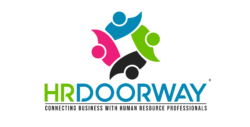How to align your people, processes, and technology with ever-changing regulations and mandates.
Amid shifting workplace policies, an ever-challenging hiring climate, and evolving regulations, Human Resources (HR) professionals are bringing compliance to the forefront of their strategies to ensure business continuity. And it’s not just organizational reputation that’s on the line; the average cost of non-compliance has risen more than 45% in 10 years, and GDPR fines start at 2% of a company’s annual revenue for corporate mishandling or privacy encroachments.
Simply put, companies — regardless of size and scope – can no longer afford not to invest in compliance. But how can today’s HR teams empower their teams with the tools to drive faster, more compliant hiring, secure candidate verification, seamless change management, and intuitive training — all while maintaining ethics as a core organizational value? Let’s dive in.
First Thing’s First: What is Human Resources Compliance?
In short, HR compliance is the process of creating, defining, and communicating policies and procedures to ensure that your employment and workplace practices follow applicable laws and regulations. Saying “I didn’t know” doesn’t cut it when it comes to audits from government agencies, so it’s essential for HR professionals to stay up-to-date with evolving mandates.
These involve laws and regulations at the federal, state, and local levels. Some of the most common regulations to have on your radar include:
- Affordable Care Act (ACA)
- Americans with Disabilities Act
- Equal Pay Act (EPA)
- Fair Labor Standards Act (FLSA)
- Family and Medical Leave Act
- Occupational Safety and Health Act (OSHA)
- Title VII of the Civil Rights Act
With a holistic approach, HR compliance helps mitigate risk, avoid fines, safeguard organizational reputation, and preserve trust amongst employees, customers, and stakeholders alike.
The Role of HR in Compliance
As you can imagine, these regulations affect the entire employee lifecycle, from recruiting to onboarding and retention. Some of the top situations in which compliance issues could arise for HR professionals include:
- Failure to adhere to the minimum working age and minimum wage
- Inappropriate interview questions
- Inaccurate background checks or payroll
- Unsecure documents
- Incomplete I-9s or missing supporting documents
- Improper training
- Unfair pay or promotion practices
- Noncompliant leave-of-absence policies and more.
Sometimes non-compliance can be accidental without best practice guidelines. For example, writing a job description for a position that includes “recent college graduates” could be considered discriminatory. There are also certain words and phrases that subconsciously turn people away from job descriptions because of the perception associated with them. Textio, an app that helps companies write more inclusive hiring content, shares examples such as:
- Hulu job descriptions commonly using the word “humility,” which means more women will apply.
- On the other hand, Amazon uses phrases like “attacks” in their job postings, and the data show that more men are likely to apply.
Best Practices for HR Compliance
Being proactive about compliance is one of the best ways to protect your business. A few ways to do that include:
- Storing data for up to six years
- Outline your compliance policies, including definitions of what is and isn’t discrimination
- Update your compliance policies at least once a year
- Start with a fully compliant recruiting and hiring process
The Role of Technology in Human Resources Compliance
Because keeping up with compliance can be so complicated, many businesses rely on an all-in-one talent management solution or software that automates workflows and has built-in compliance checks to ensure that paperwork is completed correctly.
Using a best-in-breed talent management solution or specialized software can be the difference between costly fines that drive your business into the ground or keeping your business running for years to come!
HRDoorway offers a simple all in one compliance resource here
– JDSupra

